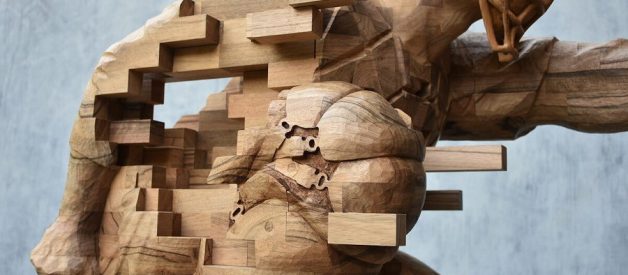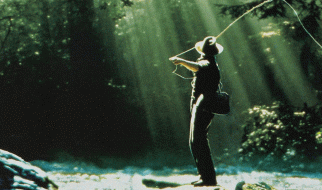In this article I will share with you knowledge about sculpture materials. Please understand if there is any incomplete description. Any material that can be shaped in three dimensions can be used for engraving. Certain materials have proven to be particularly suitable due to their structural and aesthetic properties and their practicality. The most important these are stone, wood, metal, clay, ivory and gypsum. These are also can be called traditional sculpture materials. There are many secondary materials, many of which have only recently begun to be used. Such as some sculptures from recycled materials, light and voice.
Traditional Sculpture Materials
Which material is commonly used in sculpture? The first traditional sculpture materials I want to introduce is stone. Throughout history, stone has been the principal sculpture making materials of monumental sculpture. There are practical reasons for this: many types of stone are highly resistant to the weather and therefore suitable for external use; stone is available in all parts of the world and can be obtained in large blocks; many stones have a fairly homogeneous texture and a uniform hardness that make them suitable for carving; stone has been the chief material used for the monumental architecture with which so much sculpture has been associated.
Stone
Stones belonging to all three main categories of rock formation are used in the sculpture.
 Igneous rocks
Igneous rocks
Igneous rocks are composed of granite, diorite, basalt and obsidian, which are formed by cooling of molten minerals as they approach the surface of the earth. These are the hardest stones used for sculpture.
Sedimentary rocks
Sedimentary rocks, including sandstone and limestone, are formed by the accumulation of minerals and organic matter. Sandstone is an aggregate of eroded stone particles held together by cementitious substances. Limestone is mainly formed by calcareous residues of living things.
Alabaster
Alabaster (gypsum) is also a type of sedimentary rock, a chemical deposit. There are many types of sandstone and limestone used in carving, and the quality and adaptability of carving vary greatly. Due to their method of formation, many sedimentary rocks have obvious strata and are rich in fossils.
Metamorphic rocks
Metamorphic rocks are produced due to changes in the structure of sedimentary and igneous rocks due to extreme pressure or high temperature. The most famous metamorphic rock in the sculpture is marble, they are recrystallized limestone. Roman and Renaissance sculptors, especially Michelangelo (Michelangelo) used Italy?s most famous Carrara marble, and it is still widely used today. The most famous varieties used by Greek sculptors are marble (Pantelic) and Parian (Parian), which are made of the Parthenon and its sculptures.
Because the stone is very heavy and lacks tensile strength, if the carving is too thin and improperly supported, it can easily break. Therefore, large-scale processing without fragile projections is usually preferred in sculptures of American Indians in Egypt and pre-Columbian times. However, some stones can be handled more freely and openly. Some European sculptors have specially treated marble with almost the same degrees of freedom as bronze, but this exquisite display is achieved by overcoming rather than yielding to the characteristics of the material itself.
The color and texture of stone are its most pleasant characteristics. Some stones are fine-grained and can be carved with fine details and finished with a high degree of polishing. Others are coarse-grained and require more extensive processing. The pure white Carrara marble has a translucent texture that seems to glow and react to light in a subtle, subtle way. (These characteristics of marble were well developed by 15th-century Italian sculptors such as Donatello and Desiderio da Settignano.)
The color of granite is uneven, but it has the qualities of salt and pepper, and may flicker together with mica and quartz crystals . It may be mainly black or white, or all kinds of gray, pink and red. Sandstones vary in texture, usually appearing in a variety of light yellow, pink and red warm colors. The color of limestone varies greatly, and the presence of fossils may increase the attractiveness of its surface. Many stones are rich in color due to their irregular veins.
Hardstones
Hardstones, or semiprecious stones, constitute a special group, which includes some of the most beautiful and decorative of all substances. The working of these stones, along with the working of more precious gemstones, is usually considered as part of the glyptic (gem carving or engraving), or lapidary, arts, but many artifacts produced from them can be considered small-scale sculpture. They are often harder to work than steel. First among the hardstones used for sculpture is jade, which was venerated by the ancient Chinese, who worked it, together with other hardstones, with extreme skill. It was also used sculpturally by Maya and Mexican artists. Other important hardstones are rock crystal, rose quartz, amethyst, agate, and jasper.
Wood
The principal material of tribal sculpture in Africa, Oceania, and North America, wood has also been used by every great civilization; it was used extensively during the Middle Ages, for example, especially in Germany and central Europe. Among modern sculptors who have used wood for important works are Ernst Barlach, Ossip Zadkine, and Henry Moore.
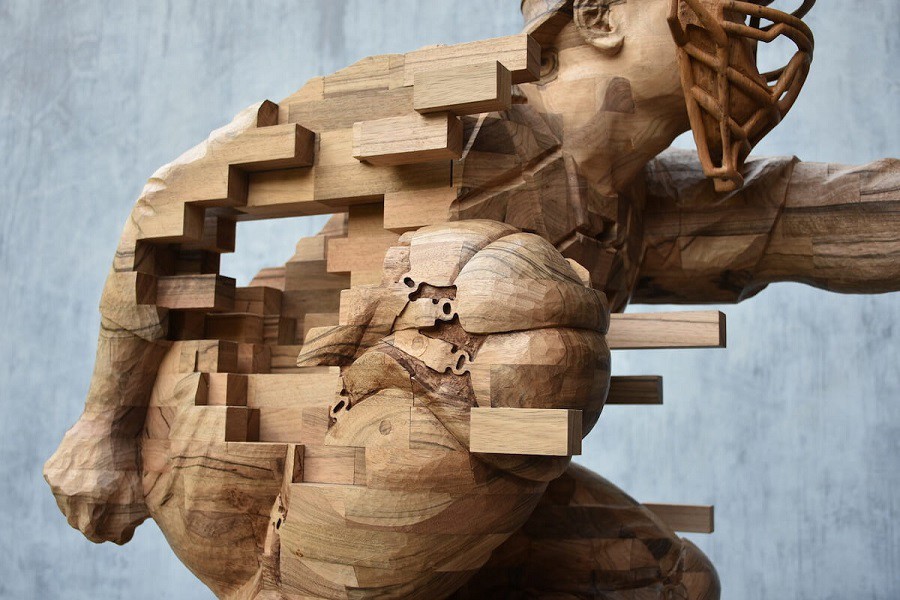
Both hardwoods and softwoods are used for sculpture. Some are close-grained, and they cut like cheese; others are open-grained and stringy. The fibrous structure of wood gives it considerable tensile strength, so that it may be carved thinly and with greater freedom than stone. For large or complex open compositions, a number of pieces of wood may be jointed. Wood is used mainly for indoor sculpture, for it is not as tough or durable as stone; changes of humidity and temperature may cause it to split, and it is subject to attack by insects and fungus. The grain of wood is one of its most attractive features, giving variety of pattern and texture to its surfaces. Its colours, too, are subtle and varied. In general, wood has a warmth that stone does not have, but it lacks the massive dignity and weight of stone.
The principal woods for sculpture are oak, mahogany, limewood, walnut, elm, pine, cedar, boxwood, pear, and ebony; but many others are also used. The sizes of wood available are limited by the sizes of trees; North American Indians, for example, could carve gigantic totem poles in pine, but boxwood is available only in small pieces.
In the 20th century, many sculptors used wood as a medium for construction and carving. Laminated wood, particle board and block and plank-shaped wood can be glued, joined, tightened or bolted together, and have various finishes.
Metal
Wherever metal technology was developed, metal has been used in sculpture. The number of metal sculptures surviving from the ancient world does not correctly reflect the extent of their use, because a large number of sculptures were plundered and melted. In this way, countless metal sculptures of the Far East and Greece, as well as almost all the gold ornaments of pre-Columbian American Indians.
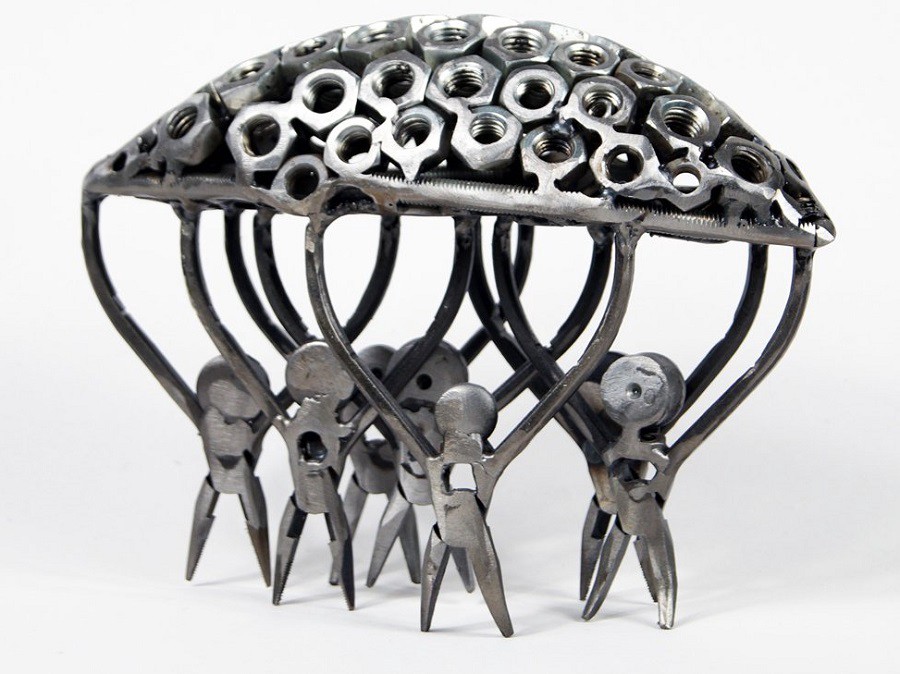
The most commonly used metal for sculpture is bronze, which is basically an alloy of copper and tin; but gold, silver, aluminum, copper, brass, lead, and iron have also been widely used. Most metals have extremely high strength, hardness and durability, and their tensile strength makes design freedom much greater than stone or wood. The life-size bronze puppet that is firmly fixed to the base does not need any support other than its own feet, and can even be placed on one foot. A considerable attenuation of the form is also possible without the risk of rupture.
The color, bright luster and reflectivity of the metal surface have been highly evaluated and have been fully utilized in sculpture, although since the Renaissance, artificial patina has usually been chosen as a bronze finish.
Bronze
Metal can be processed in many ways to produce sculptures. They can be cast-that is, melted and poured into molds. Like coin manufacturing, it is extruded into a mold under pressure; or works directly-for example, by hammering, bending, cutting, welding and bulging (hammering or embossing).
The important traditions of bronze sculptures are Greece, Rome, India (especially Chora), Africa (Bini and Yoruba), Italian Renaissance and Chinese. Gold was widely used in small works in the Americas before Columbus and in Europe in the Middle Ages. A fairly new discovery, aluminum has been heavily used by modern sculptors. Iron has not been used as a casting material, but in recent years, it has become a popular material directly processed by techniques similar to blacksmiths. Sheet metal is one of the main materials used in architectural sculpture today. American sculptor David Smith effectively used sheet stainless steel.
Clay
Clay is the most common, easily available of all materials and cheap sculpture materials used in sculpture. It has been used for modeling animal and human models since it was discovered how to cook a pot. Since then it has been one of the main materials for sculptors.
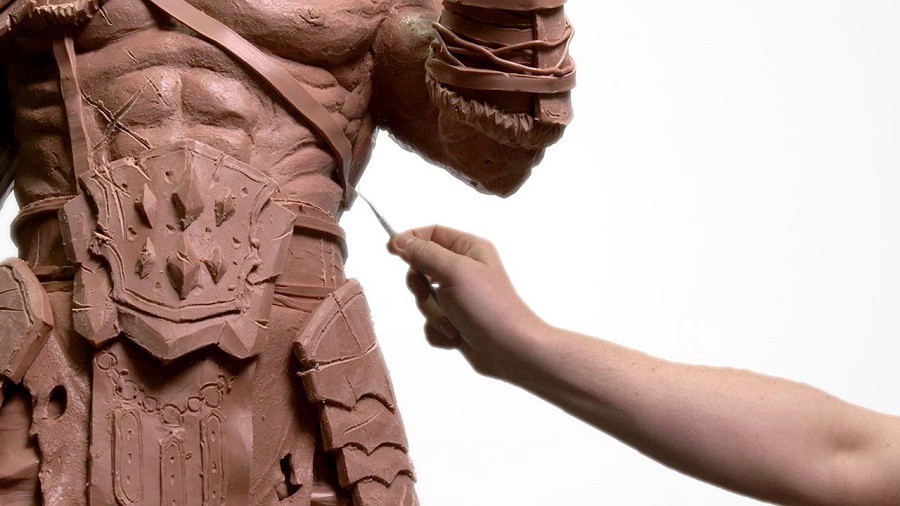
Clay has four characteristics and can be widely used: when wet, it is the most plastic of all substances, easy to model and can record the most detailed impression; when it is partially dried to the leather hard state or completely dried, it Carving and scraping; when mixed with enough water, it becomes a creamy liquid called a cream, which can be poured into molds and allowed to dry; when at 700 to 1,400 C (1,300 to 2,600 F) When burned at temperatures of 50 C, it will undergo irreversible structural changes, making it permanently hard and extremely durable.
The sculptor uses clay sculpture materials as a material for creative ideas. Used for preliminary models, then cast in plaster, metal and concrete and other materials or carved in stone; and pottery sculpture.
Depending on the nature of the clay body itself and the temperature at which it is fired, a finished pottery product is said to be earthenware, which is opaque, relatively soft, and porous; stoneware, which is hard, nonporous, and more or less vitrified; or porcelain, which is fine-textured, vitrified, and translucent. All three types of pottery are used for sculpture. Sculpture made in low-fired clays, particularly buff and red clays, is known as terra-cotta (baked earth). This term is used inconsistently, however, and is often extended to cover all forms of pottery sculpture.
Unglazed clay bodies can be smooth or coarse in texture and may be coloured white, gray, buff, brown, pink, or red. Pottery sculpture can be decorated with any of the techniques invented by potters and coated with a variety of beautiful glazes.
Paleolithic sculptors produced relief and in-the-round work in unfired clay. The ancient Chinese, particularly during the Tang (618?907) and Song (960?1279) dynasties, made superb pottery sculpture, including large-scale human figures. The best-known Greek works are the intimate small-scale figures and groups from Tanagra. Mexican and Maya sculptor-potters produced vigorous, directly modeled figures. During the Renaissance, pottery was used in Italy for major sculptural projects, including the large-scale glazed and coloured sculptures of Luca della Robbia and his family, which are among the finest works in the medium. One of the most popular uses of the pottery medium has been for the manufacture of figurines ? at Staffordshire, Meissen, and Svres, for example.
Ivory
The main source of ivory is elephant tusks; but walruses, hippos, narwhals (an arctic aquatic animal), and in the Paleolithic period, mammoth ivory was also used for sculpture. Ivory is dense, hard and difficult to work. Its color is milky white, which usually turns yellow with age. This will require high polishing. The ivory can be cut into panels for relief or cut into round wooden blocks. Or you can use the shape of ivory itself. The physical characteristics of the material have caused the most delicate and meticulous carving, and the superb craftsmanship is also very common.
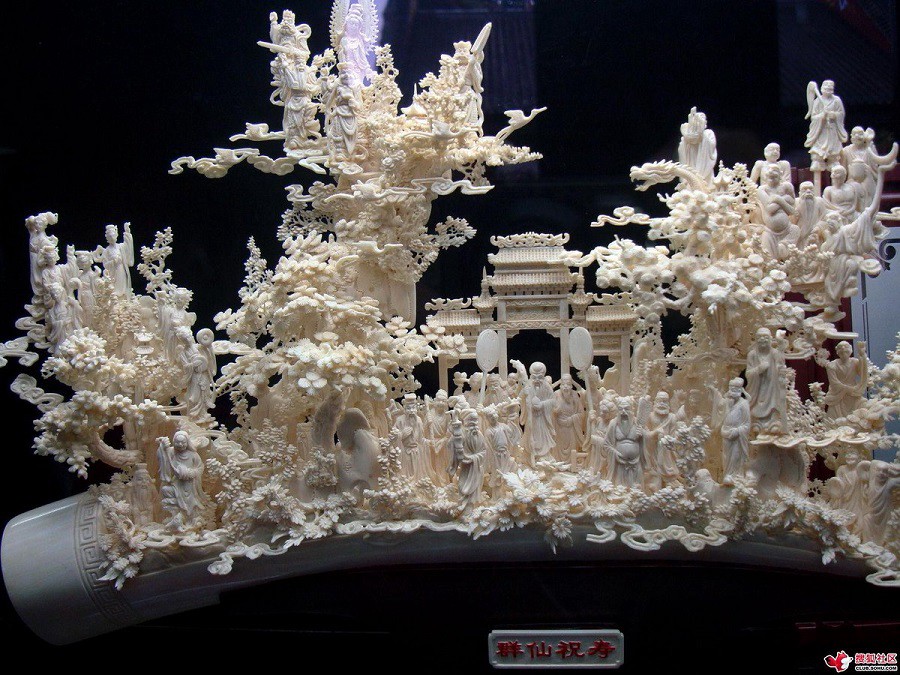
Ivory was used extensively in antiquity in the Middle and Far East and the Mediterranean. An almost unbroken Christian tradition of ivory carving reaches from Rome and Byzantium to the end of the Middle Ages. Throughout this time, ivory was used mainly in relief, often in conjunction with precious metals, enamels, and precious stones to produce the most splendid effects. Some of its main sculptural uses were for devotional diptychs, portable altars, book covers, retables (raised shelves above altars), caskets, and crucifixes. The Baroque period, too, is rich in ivories, especially in Germany. A fine tradition of ivory carving also existed in Benin, a former kingdom of West Africa.
Horn and Bone
Related to ivory, horn and bone have been used since Paleolithic times for small-scale sculpture. Reindeer horn and walrus tusks were two of the Eskimo carver?s most important materials. One of the finest of all medieval ?ivories? is a carving in whalebone, The Adoration of the Magi (Victoria and Albert Museum, London).
Plaster
Plaster of paris (sulfate of lime) is especially useful for the production of molds, casts, and preliminary models. It was used by Egyptian and Greek sculptors as a casting medium and is today the most versatile material in the sculptor?s workshop.
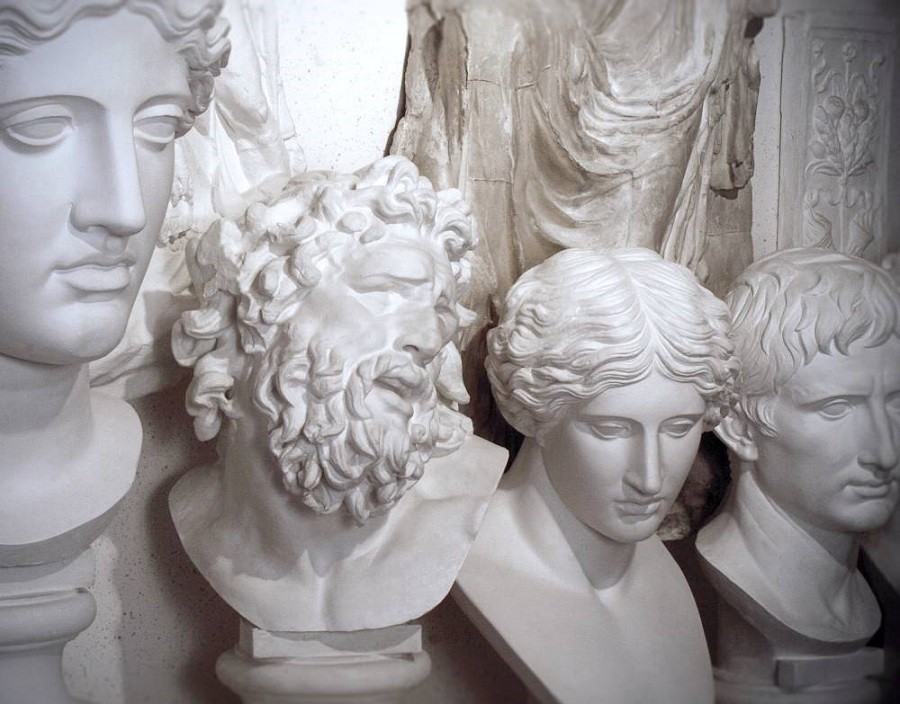
When mixed with water, the stucco will recrystallize or solidify within a short period of time (ie, become hard and inert), and its volume will increase slightly. After curing, it is relatively fragile and lacks characteristics, so it has limited use in completing the work. Gypsum can be poured as a liquid, directly modeled with the appropriate consistency, or easily carved after curing. Other materials can be added to delay its solidification, increase its hardness or heat resistance, change its color or enhance its strength.
The main sculptural use of plaster in the past was for molding and casting clay models as a stage in the production of cast metal sculpture. Many sculptors today omit the clay-modeling stage and model directly in plaster. As a mold material in the casting of concrete and fibreglass sculpture, plaster is widely used. It has great value as a material for reproducing existing sculpture; many museums, for example, use such casts for study purposes.
Non Traditional Sculpture Materials
There are many non traditional sculpture materials such as concrete instead of stone to be a trendy material.
Concrete
Basically, concrete is a mixture of an aggregate (usually sand and small pieces of stone) bound together by cement. A variety of stones, such as crushed marble, granite chips, and gravel, can be used, each giving a different effect of colour and texture. Commercial cement is gray, white, or black; but it can be coloured by additives. The cement most widely used by sculptors is ciment fondu, which is extremely hard and quick setting. A recent invention ? at least, in appropriate forms for sculpture ? concrete is rapidly replacing stone for certain types of work. Because it is cheap, hard, tough, and durable, it is particularly suitable for large outdoor projects, especially decorative wall surfaces. With proper reinforcement it permits great freedom of design. And by using techniques similar to those of the building industry, sculptors are able to create works in concrete on a gigantic scale.
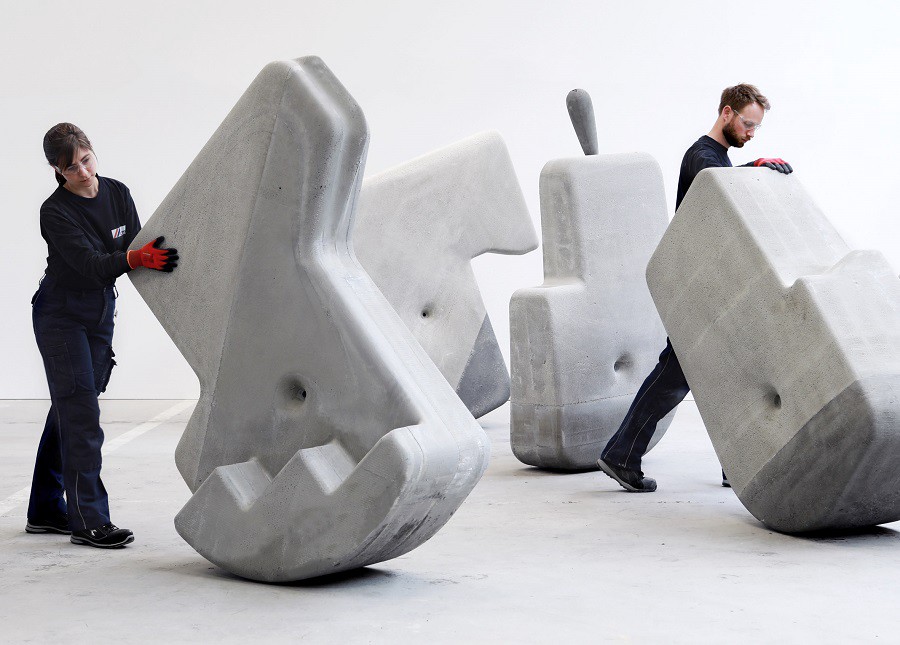
Resin
When synthetic resins, especially polyesters, are reinforced with laminations of glass fibre, the result is a lightweight shell that is extremely strong, hard, and durable. It is usually known simply as fibreglass. After having been successfully used for car bodies, boat hulls, and the like, it has developed recently into an important material for sculpture. Because the material is visually unattractive in itself, it is usually coloured by means of fillers and pigments. It was first used in sculpture in conjunction with powdered metal fillers in order to produce cheap ?cold-cast? substitutes for bronze and aluminum, but with the recent tendency to use bright colours in sculpture it is now often coloured either by pigmenting the material itself or by painting.
It is possible to model fibreglass, but more usually it is cast as a laminated shell. Its possibilities for sculpture have not yet been fully exploited.
Wax
Various formulas for modeling wax have been used in the past, but these have been generally replaced by synthetic waxes. The main uses of wax in sculpture have been as a preliminary modeling material for metal casting by the lost-wax, or cire-perdue, process (see Methods and techniques, below) and for making sketches. It is not durable enough for use as a material in its own right, although it has been used for small works, such as wax fruit, that can be kept under a glass dome.
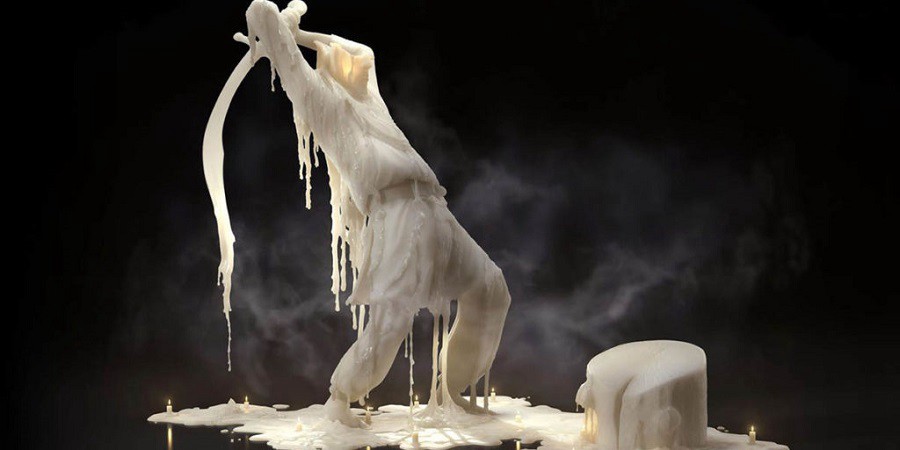
Pulped Paper
Papier-mch (pulped paper bonded with glue) has been used for sculpture, especially in the Far East. Mainly used for decorative work, especially masks, it can have considerable strength; the Japanese, for example, made armour from it. Sculpture made of sheet paper is a limited art form used only for ephemeral and usually trivial work.
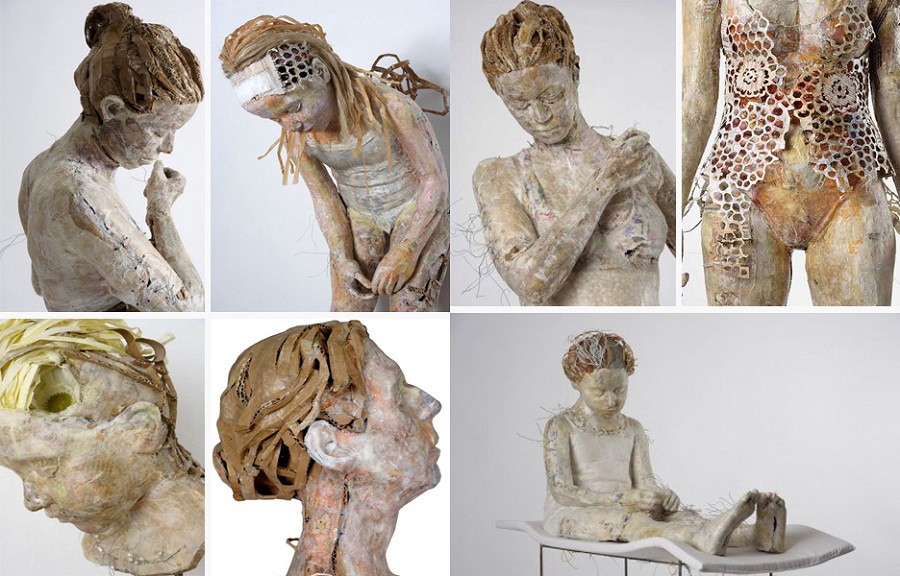
Numerous other permanent types of sculpture materials ? such as shells, amber, and brick ? and ephemeral ones ? such as feathers, baker?s dough, sugar, bird seed, foliage, ice and snow, and cake icing ? have been used for fashioning three-dimensional images. In view of late 20th-century trends in sculpture it is no longer possible to speak of ?the materials of sculpture.? Modern sculpture has no special materials, the sculptor can use any thing as modern sculpture materials. Any material, natural or man-made, is likely to be used, including inflated polyethylene, foam rubber, expanded polystyrene, fabrics, and neon tubes; the materials for a sculpture by Claes Oldenburg, for example, are listed as canvas, cloth, Dacron, metal, foam rubber, and Plexiglas. Real objects, too, may be incorporated in sculpture, as in the mixed-medium compositions of Edward Kienholz; even junk has its devotees, who fashion ?junk? sculpture.
?The Previous: The Relationship Between Sculpture And Photography
?The Next:
This article from: https://www.modernsculptureartists.com/2020/04/26/sculpture-materials/
